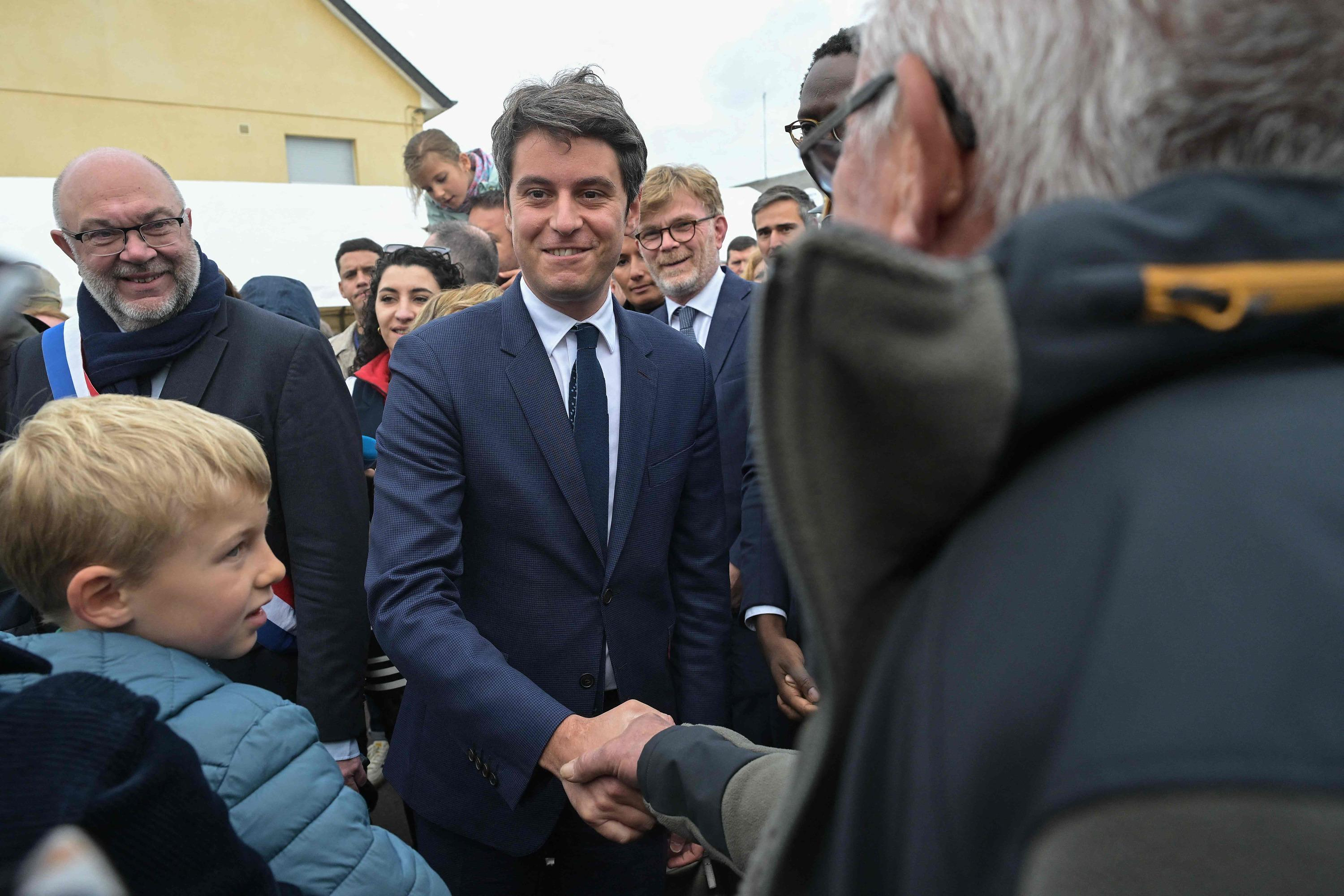There are basically three ways to ride the cable car in San Francisco. Variant one: You sit inside in the booth. If all other places are taken, that may be an option. Variant two: You sit outside on the wooden bench. It's ok, especially for people with walking difficulties and seniors. Variant three is the most beautiful: climb onto the footboard outside, hold one of the handles tightly and face the wind.
To tell the truth: There isn't much wind, because the top speed of the cable cars is only 15.3 kilometers per hour. But out here, the sensory impressions storm the passengers so beautifully unhindered - the sun (when it's not foggy), the rattling on the rails, the sonorous hum of the cable that makes its endless rounds under the road, the jingling (once called "stop", "continue" twice), the pull of centrifugal force when the cart rolls around the curve; and the smell of pine resin rubbing the steel cord under the road.
When the carriage stops and the braided steel snaps through the tongs' handles, the resin burns and rises as a scent. And that for 150 years - the railway went into operation in 1873, today the wonderfully old-fashioned carriages rattle through San Francisco on three lines. There is no better city tour than with these vehicles, which are the only mobile national monument in the USA.
It takes two men to drive such a cable car (it's still mostly men). One stands in front and operates the giant lever that makes the car move. The train has no motor; it only drives when clipped to the cable. This requires this large iron truss that grips the cable at the bottom, lifts it slightly, then either closes iron jaws around it (like pliers) or lets the cable run empty.
It takes a lot of strength to get this right and skill; because it is also important to carry out very different maneuvers. Either the journey is up one of the steep hills that make up San Francisco—that's almost the easiest part: pulling the cable. Or the vehicle rolls down the hill; also in this case the iron jaws remain at least close to the cable. Without a cable it becomes dangerous; then the journey would be uncontrolled.
The most difficult task is driving around a curve. Here a cable has to be dropped, then the tongs grab the next whirring steel cord under the roadway. The second man in the back has an easier job: that's the brakeman — if necessary, he lowers heavy blocks of wood onto the road under the car with a horizontal rotary lever.
In addition, the person behind is a ticket cutter, an entertainer, and a bell ringer. Just to reassure you: there is also an emergency brake. This is under the control of the driver with the giant lever and essentially consists of an iron disc that can smash down onto the roadway like a guillotine guillotine. Then the tracks are gone. But the car is stationary.
Let's switch from the cult vehicle to the city it rolls through. Some say San Francisco has run down quite a bit in recent years. Lots of crime, more homeless people on the streets. But we say: the people in San Francisco, who aren't idiots, voted out the politicians who are responsible for the mess long ago, and of course San Francisco basically remains a pearl. Open to the water and as hilly as you know it from films.
Whoever rumbles up the steep streets with the cable car sees the beautiful old house facades gliding past, which adapt to the incline of the street like spikes in a saw blade. It's like in the cinema, only for real. And of course, every car stops at the famous Lombard Street, which winds its way down the hillside in red brick switchbacks, where you can get out and take photos.
Some say that with around 800,000 inhabitants, San Francisco is actually not a metropolis! But we say 800,000 is a good number, about as many people as in Frankfurt am Main or Amsterdam. After all, there are many weird guys to admire in this city, and there is also a real Chinatown. Incidentally, San Francisco was a multi-ethnic city right from the start.
Visitors should definitely make time for the Cable Car Museum. The biggest attraction there: the huge wheels in the engine room, over which the cables run endlessly. But of course those who are interested can also study in detail how the thing with the giant pincer lever works and what a wooden brake block looks like after it has been in use for a long time (quite done).
Just beyond the museum is the depot, known simply as "the barn" in San Francisco: a track-filled concourse with a turntable where forklifts gently push the cable cars in front of the door to take them up the slight incline roll down before they can cling to the cable. The "shed" also includes a team of craftsmen who lovingly maintain, adjust, varnish, polish and decorate the wagons by hand. Although the cable cars shouldn't appear too licked: the fact that they are in use, that the benches have been scraped off many backs and legs, is part of their charm.
San Francisco was by no means the only city with a cable car. Melbourne had one, Paris, Glasgow, also Brooklyn, San Diego, Seattle. But San Francisco is the only place that still has such a transportation system today. And that is mainly thanks to one woman: Friedel Klussmann. A doctor's wife, member of high society and campaigner for monument protection.
After World War II, a mayor named Roger Lapham planned to rip the rails off the streets and scrap the cable cars; things were too unsafe and too expensive for him. A modern bus system should replace them.
But he had reckoned without Friedel Klussmann. She founded the organization "San Francisco Beautiful" and a citizens' initiative to save the cable car, which mainly belonged to women's groups. Klussmann and her employees collected more than 50,000 signatures, and there was a referendum that kept the cable cars.
In 1964 they were named "National Historic Landmarks", which means that Washington has been committed to their preservation ever since. And that's right. San Francisco without cable cars: It would be like Venice without gondolas.
However, there is a second charming, old-fashioned means of transport in San Francisco: the VW Bulli. Allan Graves, who used to have a job so boring that words can't describe it, founded San Francisco Love Tours with his brother Robert a few years ago. Since then, the two have been driving tourists through the streets of San Francisco in brightly painted hippie buses. Jokes, flowery explanations, and '60s kitsongs ("If you're going to San Francisco / be sure to wear some flowers in your hair") are included; Joints don't.
Special attention is paid to the Haight Ashbury district, which was overrun by hippies in the Summer of Love in 1967, who practiced free love, swallowed tons of LSD and unabashedly smoked weed. It all started with a legendary concert in January that featured the Grateful Dead, among others.
Then the young people with long hair began to flock to San Francisco. The city government warned the hippies to stay away - of course that was the best invitation ever. There was a council that organized shelter, sanitation, cultural events, and even a clinic where hippies with acute symptoms of acute poisoning were treated for free.
Allan Graves knows exactly where divine-earthly rocker Janis Joplin lived after she split from a then-lover. But he also likes to drive guests over to the lesbian and gay district of The Castro. If you wish, he will drive you across the Golden Gate Bridge and back again.
And he gives them time at Alamo Park, where survivors gathered in 1906 after the great earthquake and fires that raged through the city. It's also home to the Painted Ladies, a row of beautifully painted wooden houses from the Victorian era. Before the fire, there were more such beauties; these are left over.
Before or after the ride on the colorful hippie bus, there is ideally time for a tour of Alcatraz. The famous prison, in which selected criminals were once held, lies on a rocky island about two kilometers off the coast like a concrete castle on a mountain top - from here visitors have the best view of San Francisco. From Alcatraz everyone understands why the city was founded exactly where it is now: on a natural bay perfect for building a port.
There is the strait through which ships come in from the vast Pacific. The Golden Gate Bridge swings over it like it's been there forever. The Army originally wanted the suspension bridge with the tall towers to be painted in yellow and black stripes; as a warning to prevent military aircraft from crashing into it. Let's close our eyes, imagine what that would look like, shake ourselves briefly, open our eyes again and see with relief the orange of reality.
Fisherman's Wharf down by the harbor is another attraction, just a few minutes' walk from the Powell-Mason Line cable car terminus. The waterfront is mostly restaurants and souvenir shops on the ground and seagulls screeching in the sky. Pier 39 is nearby and if you're lucky you might see sea lions sunbathing.
You should definitely not miss the Presidio. The historic military base below the Golden Gate Bridge cannot be reached by cable car, so those who are interested are best left there by Allen Graves in his colorful VW bus. It was here that the Spanish stationed an armed garrison in 1776 (far away on the east coast a new nation was just being born).
Later the site belonged to the Mexicans, after 1848 (the new nation on the east coast had just waged a successful war of plunder against Mexico) it was occupied by the American army. The area has been a national park since 1994. That means: The rules of the American state apply here – unlike in the rest of the city, cannabis consumption is prohibited here. However, you don't have to smoke the green idyll, in which sparse historical buildings are thrown in.
Finally, from the Presidio, where it's green, quiet, and peaceful, it's back to downtown San Francisco. Let's stroll down Market Street. Watch the beggars, the homeless, the musicians, the drug addicts, the whores who hang around there as if they were in the European Middle Ages. Let's admit that there has always been a seedy side to San Francisco (like Frankfurt am Main with its Kaiserstrasse, like Amsterdam with its red-light district).
Ideally, the walk leads to the wooden turntable on Powell Street, the large turntable where the cable car cars are pushed into position — by muscle power, of course. May the line of people not be too long there, so that we can get on the car quickly. It rumbles up Powell Street to the top of the hill where the views are great, then struggles through two tight turns before rolling back down the hill on Mason Street.
Let's breathe the air, the openness, the sea that is very close. And if screams can be heard in the wagon: don't be surprised! It often happens that tourists, but also locals, loudly exclaim their delight when riding the cable car.
Arrival: Non-stop from Frankfurt or Munich to San Francisco, for example with Lufthansa or United.
Accommodation: The "Beacon Grand" is a magnificent Art Nouveau hotel, double rooms from the equivalent of 180 euros, beacongrand.com. The "Inn At The Presidio" looks like a better youth hostel from the outside, but inside is a luxury hotel with wonderful rooms, some with a view of the Golden Gate Bridge, double rooms from 400 euros, presidiolodging.com
tours
Cable car rides: The route network consists of three lines (Powell-Hyde, Powell-Mason and California Street), a ticket costs eight dollars (7.50 euros) for a single ride, day tickets from $13, sfmta.com /getting-around/muni/cable-cars
Learn more: San Francisco Travel, sftravel.com
Participation in the trip was supported by the San Francisco Travel Association. You can find our standards of transparency and journalistic independence at axelspringer.com/de/Werte/downloads.

 B:SM will break its investment record this year with 62 million euros
B:SM will break its investment record this year with 62 million euros War in Ukraine: when kyiv attacks Russia with inflatable balloons loaded with explosives
War in Ukraine: when kyiv attacks Russia with inflatable balloons loaded with explosives United States: divided on the question of presidential immunity, the Supreme Court offers respite to Trump
United States: divided on the question of presidential immunity, the Supreme Court offers respite to Trump Maurizio Molinari: “the Scurati affair, a European injury”
Maurizio Molinari: “the Scurati affair, a European injury” First three cases of “native” cholera confirmed in Mayotte
First three cases of “native” cholera confirmed in Mayotte Meningitis: compulsory vaccination for babies will be extended in 2025
Meningitis: compulsory vaccination for babies will be extended in 2025 Spain is the country in the European Union with the most overqualified workers for their jobs
Spain is the country in the European Union with the most overqualified workers for their jobs Parvovirus alert, the “fifth disease” of children which has already caused the death of five babies in 2024
Parvovirus alert, the “fifth disease” of children which has already caused the death of five babies in 2024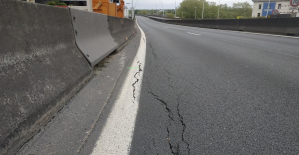 The A13 motorway will not reopen on May 1
The A13 motorway will not reopen on May 1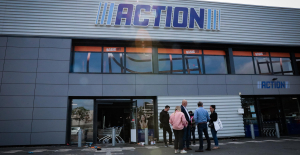 More than 1,500 items for less than 1 euro: the Dutch discounter Action opens a third store in Paris
More than 1,500 items for less than 1 euro: the Dutch discounter Action opens a third store in Paris 100 million euros in loans, water storage, Ecophyto plan… New measures from the executive towards farmers
100 million euros in loans, water storage, Ecophyto plan… New measures from the executive towards farmers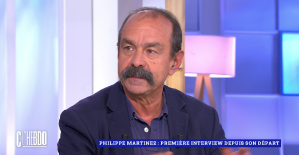 “He is greatly responsible”: Philippe Martinez accuses Emmanuel Macron of having raised the RN
“He is greatly responsible”: Philippe Martinez accuses Emmanuel Macron of having raised the RN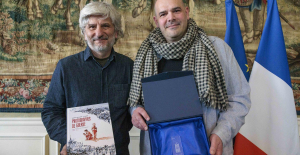 Les Galons de la BD dedicates War Photographers, a virtuoso album on the Spanish War
Les Galons de la BD dedicates War Photographers, a virtuoso album on the Spanish War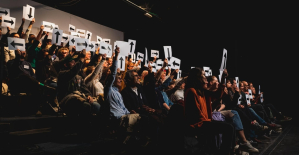 Theater: Kevin, or the example of an academic failure
Theater: Kevin, or the example of an academic failure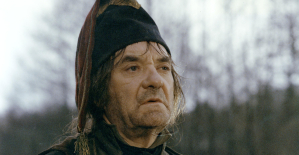 The eye of the INA: Jean Carmet, the thirst for life of a great actor
The eye of the INA: Jean Carmet, the thirst for life of a great actor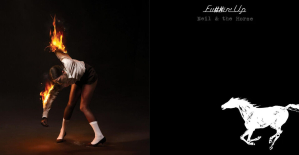 The Nuc plus ultra: St Vincent the Texane and Neil Young the return
The Nuc plus ultra: St Vincent the Texane and Neil Young the return Skoda Kodiaq 2024: a 'beast' plug-in hybrid SUV
Skoda Kodiaq 2024: a 'beast' plug-in hybrid SUV Tesla launches a new Model Y with 600 km of autonomy at a "more accessible price"
Tesla launches a new Model Y with 600 km of autonomy at a "more accessible price" The 10 best-selling cars in March 2024 in Spain: sales fall due to Easter
The 10 best-selling cars in March 2024 in Spain: sales fall due to Easter A private jet company buys more than 100 flying cars
A private jet company buys more than 100 flying cars This is how housing prices have changed in Spain in the last decade
This is how housing prices have changed in Spain in the last decade The home mortgage firm drops 10% in January and interest soars to 3.46%
The home mortgage firm drops 10% in January and interest soars to 3.46% The jewel of the Rocío de Nagüeles urbanization: a dream villa in Marbella
The jewel of the Rocío de Nagüeles urbanization: a dream villa in Marbella Rental prices grow by 7.3% in February: where does it go up and where does it go down?
Rental prices grow by 7.3% in February: where does it go up and where does it go down? Even on a mission for NATO, the Charles-de-Gaulle remains under French control, Lecornu responds to Mélenchon
Even on a mission for NATO, the Charles-de-Gaulle remains under French control, Lecornu responds to Mélenchon “Deadly Europe”, “economic decline”, immigration… What to remember from Emmanuel Macron’s speech at the Sorbonne
“Deadly Europe”, “economic decline”, immigration… What to remember from Emmanuel Macron’s speech at the Sorbonne Sale of Biogaran: The Republicans write to Emmanuel Macron
Sale of Biogaran: The Republicans write to Emmanuel Macron Europeans: “All those who claim that we don’t need Europe are liars”, criticizes Bayrou
Europeans: “All those who claim that we don’t need Europe are liars”, criticizes Bayrou These French cities that will boycott the World Cup in Qatar
These French cities that will boycott the World Cup in Qatar Paris 2024 Olympic Games: “It’s up to us to continue to honor what the Games are,” announces Estanguet
Paris 2024 Olympic Games: “It’s up to us to continue to honor what the Games are,” announces Estanguet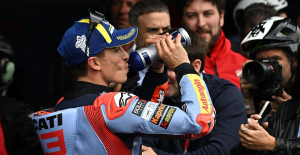 MotoGP: Marc Marquez takes pole position in Spain
MotoGP: Marc Marquez takes pole position in Spain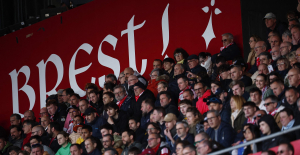 Ligue 1: Brest wants to play the European Cup at the Stade Francis-Le Blé
Ligue 1: Brest wants to play the European Cup at the Stade Francis-Le Blé Tennis: Tsitsipas released as soon as he entered the competition in Madrid
Tennis: Tsitsipas released as soon as he entered the competition in Madrid





